Always: selected early recordings, 1926-1927
________________________________
published on 28 April 2014; revised on 8 March 2015; latest edit: 4 November 2018
(above) Newlyweds Irving and Ellin Berlin arrive in Southampton, UK on 15 January 1926. The two were married in a civil ceremony at City Hall, New York, on 4 January 1926, followed by a honeymoon at the Ritz-Carlton in Atlantic City.
On the romance of Irving Berlin and Ellin Mackay:
- “A Jazz Age Love Story” by Michael Burke, for IrishAmerica.com
- Wikipedia
- YouTube video clip, from the TV series American Popular Song
From Wikipedia (photos added):
 [I]n the 1920s, [Berlin] fell in love with a young heiress, Ellin Mackay, the daughter of Clarence Mackay, the socially prominent head of the Postal Telegraph Cable Company. Because Berlin was Jewish and she was Catholic, their life was followed in every possible detail by the press, which found the romance of an immigrant from the Lower East Side and a young heiress a good story.[3]
[I]n the 1920s, [Berlin] fell in love with a young heiress, Ellin Mackay, the daughter of Clarence Mackay, the socially prominent head of the Postal Telegraph Cable Company. Because Berlin was Jewish and she was Catholic, their life was followed in every possible detail by the press, which found the romance of an immigrant from the Lower East Side and a young heiress a good story.[3]
They met in 1925, and her father opposed the match from the start. He went so far as to send her off to Europe to find other suitors and forget Mr. Berlin. However, Berlin wooed her over the airwaves with his songs “Remember” and “Always.” His biographer, Philip Furia, writes that “even before Ellin returned from Europe, newspapers rumored they were engaged, and Broadway shows featured skits of the lovelorn songwriter….” During the week after her return, both she and Berlin were “besieged by reporters, sometimes fifty at a time.” Variety reported that her father had vowed their marriage “would only happen ‘over my dead body.'”[42] As a result they decided to elope and were married in a simple civil ceremony at the Municipal Building away from media attention.
 A front-page story in the New York Times about the wedding stated, “Although Broadway for months had expected the one-time newsboy and Bowery singer of songs to wed the prominent young society girl…the marriage took Clarence H. Mackay, father of the bride, completely by surprise. He was reported to have been stunned when he learned from a third person of the Municipal Building ceremony.” However, the bride’s mother, who was divorced from Mr. Mackay, was apparently not of the same mind according to the story: “in fact, some quarters pictured her as desirous of seeing her daughter follow the dictates of her own heart. It was reported that the couple motored to the home of Mrs. Blake [her mother], early in the evening and obtained her blessing.”[44]
A front-page story in the New York Times about the wedding stated, “Although Broadway for months had expected the one-time newsboy and Bowery singer of songs to wed the prominent young society girl…the marriage took Clarence H. Mackay, father of the bride, completely by surprise. He was reported to have been stunned when he learned from a third person of the Municipal Building ceremony.” However, the bride’s mother, who was divorced from Mr. Mackay, was apparently not of the same mind according to the story: “in fact, some quarters pictured her as desirous of seeing her daughter follow the dictates of her own heart. It was reported that the couple motored to the home of Mrs. Blake [her mother], early in the evening and obtained her blessing.”[44]
_________________
Always (Irving Berlin)
Excerpts from The Complete Lyrics of Irving Berlin, eds. Robert Kimball and Linda Emmet (2001), p.228:
Published. Copyrighted September 16, 1925. Previously registered for copyright as an unpublished song July 2, 1925. Given as a wedding present by Berlin to his bride Ellin Mackay.
According to a notation by Berlin on the earliest known piano-vocal manuscript of the song — found among his papers…“Always” was written in Atlantic City in July 1925.
 Complete Lyrics (p. 228) notes that the original “dummy” lyric written by Berlin was entirely rewritten except for the final four lines of the chorus:
Complete Lyrics (p. 228) notes that the original “dummy” lyric written by Berlin was entirely rewritten except for the final four lines of the chorus:
Not for just an hour
Not for just a day
Not for just a year
But always
Regarding these lines, Berlin told an unnamed newspaper (undated quote),
I really thought at the time that they weren’t good enough. Now I believe that without those lines the song would never have been half as popular as it was. Now I think they’re just right — but I didn’t know at the time. (p. 228)
Complete Lyrics refutes the frequent claim that “Always” was written for the 1925 Broadway musical The Cocoanuts, quoting a letter written by Berlin to Groucho Marx in which he clearly states that the song was not written for The Cocoanuts, though it was written during the period he was working on the score for that show (p. 228).
Irving Kaufman — recorded on 30 January 1926; issued on Harmony 110-H, c/w “Always” (instrumental), recorded by Ernie Golden and his Hotel McAlpin Orchestra
.
Ernie Golden and his Hotel McAlpin Orchestra — instrumental version recorded on 2 February 1926; issued on Harmony 110-H, c/w “Always,” by Irving Kaufman
.
Paul Ash and His Orchestra, vocal refrain: Milton Watson — recorded in Chicago on 9 February 1926; issued on Columbia 571-D, c/w “But I Do – You Know I Do,” recorded by Paul Ash and His Orchestra, with vocal by Harry Maxfield
.
Bob Haring and the Regent Club Orchestra, vocal: Frank Munn — recorded on 9 February 1926; issued on Brunswick 3090, c/w “Sympathy Waltz” (m. Irving Bibo, w. Tom Ford)
.
Henry Burr — recorded on 10 February 1926, the last of 9 takes; issued in April 1926 as Victor 19959-A (see label in the video below), b/w “When Autumn Leaves Are Falling,” recorded by Jack Smith
.
Orchestre Chez Fysher — recorded on 12 February 1926; issued on Brunswick 3089, b/w “Everything’s Gonna Be Alright”
.
Vincent Lopez and His Casa Lopez Orchestra — recorded on 13 February 1926; issued on OKeh 40567, b/w “In the Middle of the Night” (m. Walter Donaldson, w. Billy Rose)
.
Nick Lucas — recorded 13 February 1926; issued on Brunswick 3088, c/w “I Don’t Believe It But Say It Again”
.
The 1926 Nick Lucas recording is played in the following scene featuring Barbara Kent and Glenn Tryon in the 1928 Universal Pictures feature film Lonesome. Although primarily a “silent” film, Lonesome has a score, sound effects, and three dialog scenes. The Soundtracks page for the film at IMDb indicates that “Always” is played “by dance orchestra at ballroom” in one scene, and sung by Nick Lucas “on Brunswick recording played in last scene.”
The full final scene (available in this video of the complete movie, for example) reveals that the disc being placed on the turntable by Tryon is supposed to represent Brunswick 3088, although the unusually large letters of the song title on a close-up shot of the disc suggest that it’s a prop.
It’s clearly evident that the video creator has replaced the portion of the original soundtrack where the record is played. Among factors that reveal the edit are the abrupt cut of the ambient soundtrack music just before the recording begins playing, the change in sound quality at that point, and the loud cracks and pops heard as it plays, which aren’t heard in the recording included in the film soundtrack.
.
George Olsen and his Music — recorded on 16 February 1926; released in April 1926 on the single Victor 19955-A (see label below right), b/w “Princess Flavia: Medley waltz,” recorded by the Troubadours
 There were fourteen takes on three different dates, resulting in two masters given the catalog number 19955. However, if I correctly understand the Victor discography notes, only the second of the two master takes, recorded on 16 February 1926, was released.
There were fourteen takes on three different dates, resulting in two masters given the catalog number 19955. However, if I correctly understand the Victor discography notes, only the second of the two master takes, recorded on 16 February 1926, was released.
Fran Frey (baritone vocal)
Bob Rice (baritone vocal)
Edward Joyce (vocalist)
George Olsen (director)
.
The Clicquot Club Eskimos, under the direction of Harry Reser — recorded on 8 March 1926; issued on Columbia 599-D (Viva-tonal), c/w “I’m In Love With You That’s Why”
On Columbia’s “Viva-tonal” records, Wikipedia says:
On February 25, 1925, Columbia began recording with the new electric recording process licensed from Western Electric. The new “Viva-tonal” records set a benchmark in tone and clarity unequaled on commercial discs during the “78-rpm” era. The first electrical recordings were made by Art Gillham, the popular “Whispering Pianist”. In a secret agreement with Victor, neither company made the new recording technology public knowledge for some months, in order not to hurt sales of their existing acoustically recorded catalog while a new electrically recorded catalog was being compiled.
.
Brunswick Hour Orchestra, under the direction of Walter Haenschen — recorded in February(?) 1926; issued on Brunswick 3087, b/w “Lo-Nah” (Sam H. Stept)
- recording not yet found; see label at Discogs.com
_______________
Josephine Baker — recorded in Paris, France by Odeon; issued in 1927 on catalog #49224








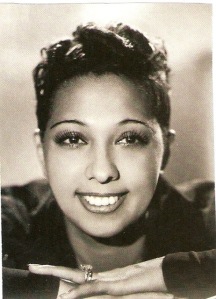





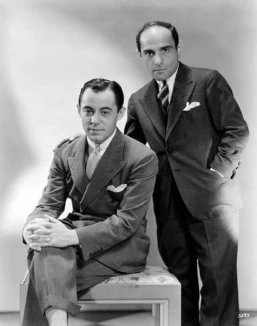

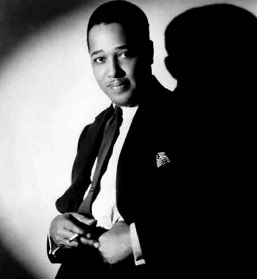


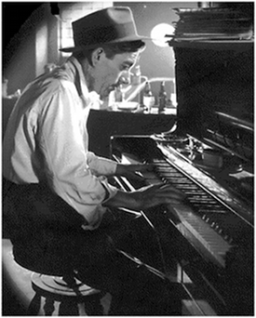
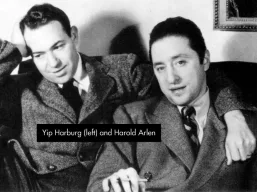




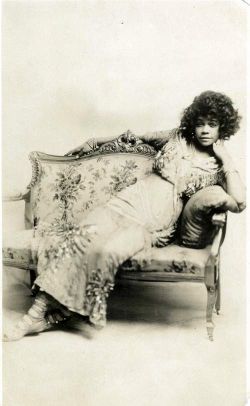










Nov 02, 2014 @ 06:35:56
I’m surprised to see that the Cliquot Club orchestra arranged and performed Always in 4/4 time as a fox trot. The Riverwalk website says this wasn’t done til the ’30’s by Berigan and the Crosby Bobcats.
LikeLiked by 1 person
Mar 04, 2015 @ 01:47:39
Anon,
Sorry to respond so late. I haven’t been able to trace the history of the song performed as a foxtrot, but I suspect that the Clicquot Club Eskimos might have been the first to record it in that form. Haven’t yet found a recording by Crosby’s Bobcats, but I did find that Benny Goodman and his Orchestra recorded a foxtrot version on 19 April 1935, which was released on Victor 25024-A, b/w “Japanese Sandman.”
LikeLike
May 29, 2018 @ 02:27:15
LikeLike